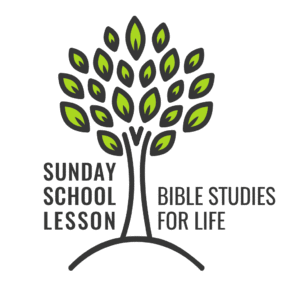By Tim Frank
Pastor, First Baptist Church, Carthage
Focal Passage: 1 Corinthians 15:1-8
 The resurrection of Jesus Christ is the most important event in the history of mankind. As we prepare to celebrate the resurrection of Jesus Christ this year, let us realize its utmost importance and stand firmly on the truth that Jesus is alive from the dead!
The resurrection of Jesus Christ is the most important event in the history of mankind. As we prepare to celebrate the resurrection of Jesus Christ this year, let us realize its utmost importance and stand firmly on the truth that Jesus is alive from the dead!
The resurrection is the climax and the conclusion of the gospel message. Paul states that he preached to those in Corinth the resurrection as truth. They received it as truth. They stood on it as truth. They were saved by the truth of the resurrection. Thinking of the New Testament, the Gospels record it as truth. The disciples proclaimed it as truth. The witnesses declared it as truth. Every Christian has believed it as truth. So, it is vital to examine the evidence that substantiates the truth of the resurrection of Jesus Christ.
The truth of the resurrection is found in the empty tomb. Paul writes in II Corinthians 15:1 that Jesus died for our sins, was buried, and rose again. This is the central statement of the gospel of Christ. After Jesus was killed, He was buried in a tomb, and the stone was rolled across the door. On Sunday morning, the women came to the tomb and found it was empty. Jesus’ body was not there. Matthew 28, Mark 16, and Luke 24 record angels telling the women that Jesus was risen from the dead. One of the arguments against the resurrection is that in their grief the women simply went to the wrong tomb. The fact that the disciples, the women, the religious officials and a squad of soldiers knew the location of the tomb makes this argument null.
The truth of the resurrection is found in the number of eyewitnesses who saw Jesus alive after the resurrection. Paul reports there were as many as five hundred eyewitnesses of Jesus after the resurrection in 1 Corinthians 15:5-8. Paul is presenting the truth that during the forty days between Jesus’ resurrection and His ascension, He was seen by many people, the vast majority who were still alive when Paul wrote 1 Corinthians.
The truth of the resurrection is also found in several supporting pieces of evidence throughout the New Testament. For example, the messages preached by the early followers of Jesus in the book of Acts include the resurrection as the point of climax (Acts 2:24; 3:15; 4:10; 5:30; 10:40; 13:30, 34; 17:3, 31; 23:6; 26:23).
Another supporting evidence of the resurrection was the changed lives and courage of the apostles. These common, uneducated men literally turned the world upside down with the gospel of Jesus (Acts 4:13; 17:6). Additional evidence is the day of worship for the Christian church.
The Apostles and early church leaders were Jewish and followed the Jewish laws, including Sabbath and synagogue meeting. As the church began to meet, they changed from Sabbath observers and met on the first day of the week to celebrate the resurrection (Acts 20:7). One final evidence for the truth of the resurrection is the meaning of baptism for the Christian. It is no longer a washing, as in the work of John the Baptist. Christian baptism is an identification with the death, burial, and resurrection of Jesus (Romans 6:4).
The resurrection has been a key teaching of the church for the past 2,000 years. Through these two millenniums, doubters, heretics, and antagonists have sought to destroy the truth of the resurrection, yet it continues to stand on the strong evidence of the empty tomb, the countless eyewitnesses, and the supporting evidence. The gospel is still the good news. Jesus Christ died on the cross for our sins, He was buried, and He rose from the dead! B&R — Frank is pastor of First Baptist Church, Carthage.

